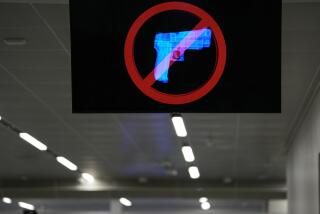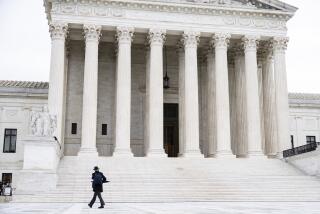Justices Overturn Identification of Defendants in Court
- Share via
SAN FRANCISCO — A criminal conviction can be based solely on a witness’ out-of-court identification of the defendant, the state Supreme Court ruled Tuesday, overturning a 35-year-old decision.
The court, then with a more liberal majority, ruled unanimously in 1960 that a pretrial identification of the defendant was not enough for a conviction, unless the defendant also was identified during the trial or was connected to the crime by other evidence.
But the justices said Tuesday, in another unanimous ruling, that an out-of-court identification should be evaluated like any other evidence.
If sufficiently reliable--from a witness who saw the events, and whose account was believed by the jury after being challenged by the defense--it can support a conviction, the court said.
An out-of-court identification may be accurate even though the witness later repudiates it, said the opinion by Justice Joyce Kennard. She said the earlier statement may be more reliable, and the later recantation may be the product of fear or a loss of memory.
The case involved a July 1992 shooting in Anaheim that wounded Vicente Garcia. A member of Garcia’s gang and another friend identified Robert Munoz Cuevas as the gunman in statements to police, but later testified they had lied or were mistaken, the court said. Both men also said they believed it was wrong to inform on members of a rival gang.
Police accounts of the out-of-court testimony were the chief evidence against Cuevas. An Orange County judge ruled the evidence admissible, saying the two accounts corroborated each other, an exception recognized by the court since the 1960 ruling. Cuevas was convicted of assault with a firearm.
His conviction was overturned by an appeals court but reinstated by the Supreme Court. Kennard said the eyewitness accounts, by two men who saw the shooting and made statements soon afterward, were reliable enough to support the conviction without an in-court identification.
“There is no logic to requiring corroboration of out-of-court identifications, but not of other types of hearsay that might be offered as evidence of guilt,” Kennard said.
More to Read
Sign up for Essential California
The most important California stories and recommendations in your inbox every morning.
You may occasionally receive promotional content from the Los Angeles Times.













